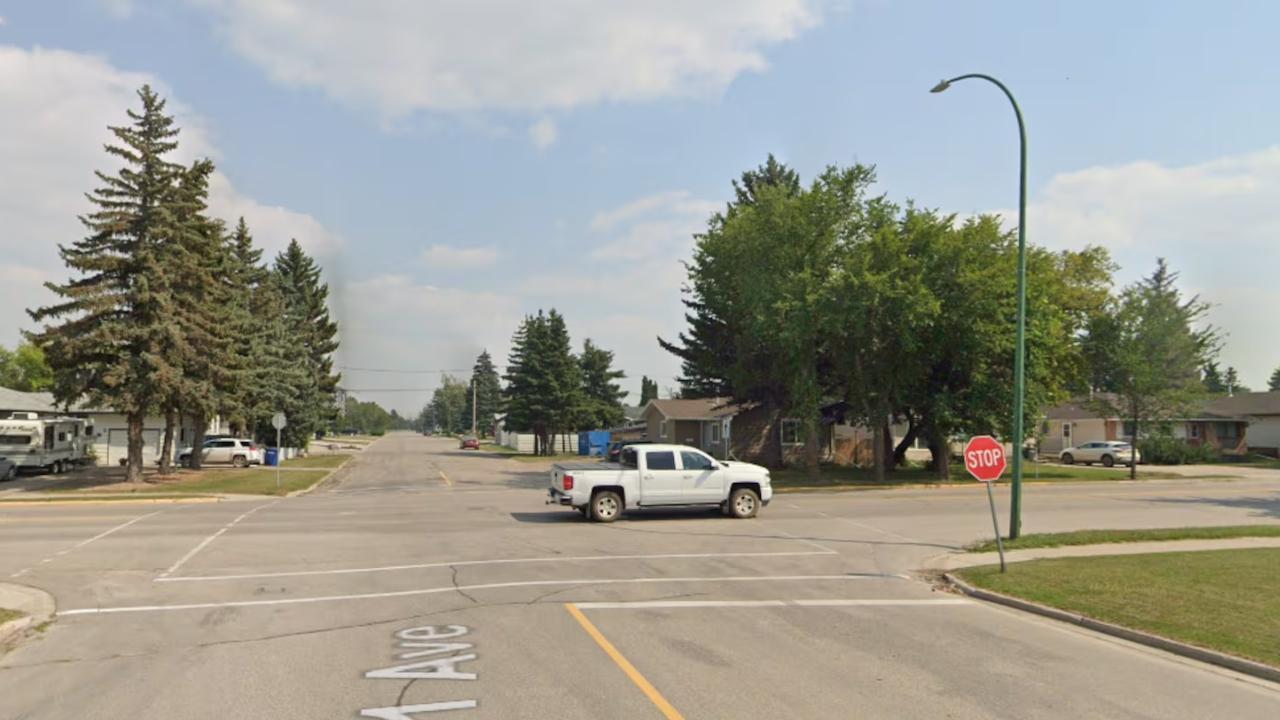
Shawn Clark, UCF Football Coach, Dies at Age 50
Shawn Clark, 50, UCF’s offensive line coach and former Appalachian State head coach, dies after rece

Photo:Google Streetview
Tragedy in Humboldt: One Dead, Another Seriously Injured in High-Impact Collision
A tragic motor vehicle collision in Humboldt, Saskatchewan has once again cast a grim spotlight on road safety in rural Canada. On July 11, 2025, a devastating two-vehicle crash at a central intersection in the city resulted in the death of one man and left another individual hospitalized with serious injuries. The accident occurred in broad daylight, during a typically busy mid-morning hour, near the intersection of Main Street and 11th Avenue, raising public concern over traffic patterns, enforcement presence, and infrastructure readiness in Humboldt.
Chronology of the Incident
The crash happened around 11:00 a.m., a time when many residents are typically engaged in errands, commutes, or mid-morning breaks. Initial reports indicate that a car and an SUV collided at the intersection. Humboldt RCMP and first responders, including paramedics and fire services, arrived at the scene swiftly.
The male driver of the car—later confirmed to be 35 years old and a Humboldt resident—was transported to a nearby hospital with life-threatening injuries. Despite emergency medical intervention, he was pronounced dead shortly thereafter. The SUV driver, meanwhile, suffered serious but non-life-threatening injuries and is currently receiving treatment in hospital.
No passengers were in either vehicle at the time of the crash.
Witness Accounts and Police Pursuit Context
Eyewitness testimony, including that from a Saskatchewan conservation officer, revealed that the car involved in the collision was traveling at a high rate of speed before impact. The officer, who had attempted a traffic stop prior to the incident, reportedly activated their vehicle's emergency lights in an attempt to pull the car over. However, the officer lost sight of the vehicle moments later, just before the crash occurred.
This sequence of events raises critical questions: Was the driver attempting to evade law enforcement? Was there a pursuit that may have influenced the circumstances of the collision? The Humboldt RCMP have stated that while a traffic stop was attempted, the event does not meet the legal threshold of a pursuit, and thus falls outside the purview of the Saskatchewan Serious Incident Response Team (SIRT), which typically investigates incidents involving police conduct.
Ongoing Investigation by RCMP and Collision Reconstruction Team
The Humboldt RCMP continue to investigate the cause of the accident. A collision reconstructionist from the Saskatchewan RCMP is now involved, working meticulously to analyze the evidence. These investigations involve:
Measuring skid marks and debris fields
Analyzing vehicle damage patterns
Retrieving any available dashcam or CCTV footage
Interviewing witnesses and first responders
Reviewing road surface and weather conditions
Authorities have stated that the scene of the crash provided substantial evidence, which is currently being evaluated. A final report will be produced, detailing the cause, contributing factors, and potential liability.
While the deceased driver’s name has not been released publicly out of respect for the family, the RCMP confirmed that next of kin have been notified and are being supported through victim services.
Impact on the Community
Humboldt is a city that has felt the sting of road tragedies before. The memory of the 2018 Humboldt Broncos bus crash—one of Canada’s most devastating road incidents—still lingers heavily. Any news of a fatal vehicle collision in this tight-knit community reopens emotional wounds and sparks renewed calls for improved road safety measures.
Following this most recent incident, local residents expressed their sorrow, shock, and frustration. Many took to social media to express condolences and share concerns about speeding through intersections, inadequate signage, and general enforcement gaps in the area. Some residents have demanded that intersections like Main and 11th Avenue be reevaluated for better traffic control mechanisms, such as additional lights, speed bumps, or roundabouts.
Road Design and Infrastructure Challenges
Like many small to mid-sized Canadian cities, Humboldt faces infrastructure challenges that may contribute to dangerous driving conditions:
Aging road infrastructure, which may not be designed for current traffic volumes
Insufficient traffic calming measures, especially at intersections with poor visibility
Lack of automated speed enforcement
Inconsistent traffic signage or absence of warning signals
These conditions become particularly risky when driver behavior deteriorates—whether through speeding, distraction, or impaired driving. As populations grow and driving patterns change, cities like Humboldt must adapt their infrastructure to keep residents safe.
Legal and Policy Implications
While the RCMP continues its investigation, legal experts say this incident could have policy implications at both the municipal and provincial level. Depending on the final findings of the reconstructionist’s report, several outcomes could follow:
Charges could be considered posthumously if the deceased driver is found to have driven dangerously or recklessly.
The City of Humboldt could face pressure to reevaluate road design at key intersections.
Provincial safety audits may be demanded to ensure similar intersections are proactively addressed before further loss of life occurs.
In the meantime, RCMP officials have urged the public not to speculate on the exact cause of the collision until all evidence has been reviewed. They emphasized that driver behavior, road conditions, and vehicle functionality must all be taken into account.
RCMP Public Advisory on Safe Driving
In response to the incident, RCMP officials issued a reminder about the dangers of high-speed travel and the importance of obeying traffic laws. Even in broad daylight, on familiar roads, a moment’s lapse in judgment can have fatal consequences.
The advisory stressed:
Speeding increases both the likelihood and severity of collisions
Drivers must yield properly at intersections
Distracted and impaired driving remain significant contributors to rural collisions
Emergency lights from law enforcement must always be obeyed immediately
The Humboldt collision serves as a stark example of what can happen when even one of these warnings is ignored.
Grief and Support in a Small Community
News of the fatal crash reverberated throughout Humboldt, a city still remembered internationally for its strength and resilience. As residents mourned the loss of one of their own, local churches, community cente rs, and support organizations stepped forward to offer grief counseling, mental health support, and spiritual guidance to the affected families and first responders.
The victim’s family is reportedly receiving support from Saskatchewan’s Victim Services program, which provides access to trauma resources and emotional assistance following serious incidents. Community members have organized meal trains and prayer vigils in support.
Calls for Broader Action Across Saskatchewan
This incident, like many before it, has reignited discussion about road safety in Saskatchewan more broadly. As one of Canada’s provinces with higher-than-average traffic fatalities per capita, Saskatchewan has faced criticism for:
Delayed safety upgrades
Underfunded municipal traffic projects
A lack of data-driven road safety policy
Low seatbelt compliance and distracted driving rates in rural areas
Advocates argue that rural and small-city safety should receive the same urgency as urban infrastructure. The fact that many collisions occur at intersections without traffic lights or adequate signage suggests that policy has not kept pace with changing traffic patterns and vehicle capabilities.
Understanding the Human Cost
Beyond legal and policy ramifications, this tragedy is ultimately about human loss. A man’s life was abruptly ended, and another person is now dealing with serious injuries that may require months of recovery. Both individuals’ families are changed forever.
The survivors of such collisions often face:
Emotional trauma including PTSD, anxiety, and survivor’s guilt
Financial hardship due to hospital bills, time off work, or therapy costs
Long-term health complications such as mobility issues or cognitive impairments
Legal proceedings and insurance disputes that prolong the grieving process
For the community, each crash is a reminder that behind every statistic is a story, and behind every collision is a family forever altered.
Conclusion: A Call to Rethink Road Safety in Humboldt
The Humboldt crash of July 11, 2025, is not just a local news story—it is a wake-up call. One life has been lost, another hangs in balance, and a community is again left asking: Could this have been prevented?
The answer may lie not just in reactive investigation, but in proactive change. Infrastructure upgrades, stricter enforcement, community education, and a renewed focus on safe driving could all help reduce the toll of road-related tragedies in Saskatchewan.
As the Humboldt RCMP finalize their investigation, the city and province must begin theirs—into how future lives can be saved through smarter roads, better enforcement, and public awareness.